Are video games an art form? Unquestionably | reviews, news & interviews
Are video games an art form? Unquestionably
Are video games an art form? Unquestionably
Ten proofs that games that can hold their own as works of art
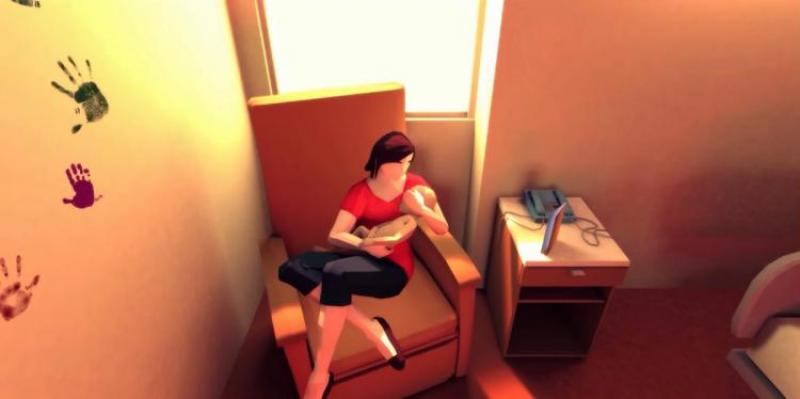
It is 2017 and we are still having this conversation: are video games art? We have been using computers to play games for at least 55 years. Arguably the first true computer game, Spacewar!, was developed in 1962 at MIT, although simple games had been played on early mainframe computers as early as the 1950s. The first games with a narrative arrived in the early 1970s.
Film critic Roger Ebert famously declared in 2010 that “video games can never be art”, but his perception was based on a limited exposure to anything beyond the simplest arcade games. If film can be considered art – and if we extend that definition to include blockbuster movies – then it is hard to see how modern games can be excluded. Perhaps not every game deserves to be held up in comparison with great novels, films or plays. But isn’t that true of many novels, films and plays too?
Below, theartsdesk suggests 10 games from the history of the genre which stand as works of art that just happen to be playable.
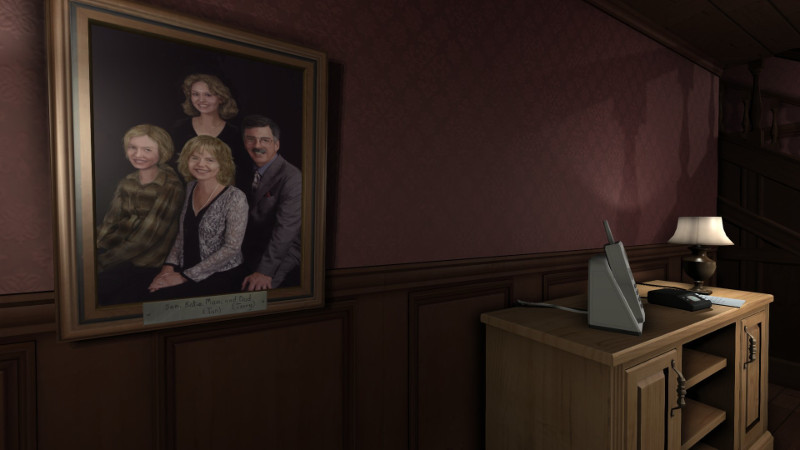 GONE HOME
GONE HOME
Gone Home belongs in the much-derided subgenre of exploration adventure games, often sarcastically referred to as "walking simulators". As in similar games such as Everyone’s Gone to the Rapture or Firewatch, players explore a detailed 3D environment, not to fight monsters or complete quests, but to uncover details and hidden stories that the designer has embedded in the game.
In Gone Home we follow 21-year-old Katie Greenbriar as she explores her empty family home and tries to find out just where her parents and younger sister have gone.
The house is rendered in painstaking detail, with hundreds of objects that can be picked up and examined. Voicemail messages and diaries hold much of the hidden story but there are tapes to be found and played, photo albums and letters to read, and dozens of subtle details that flesh out the lives of the Greenbriar family.
Gone Home feels at times like a horror game where they forgot to include the jump scares but at its heart is a subtly told story that has real emotional heft. As a piece of art it works something like a cross between an intricate sculpture and a Punchdrunk theatre piece with the characters removed.
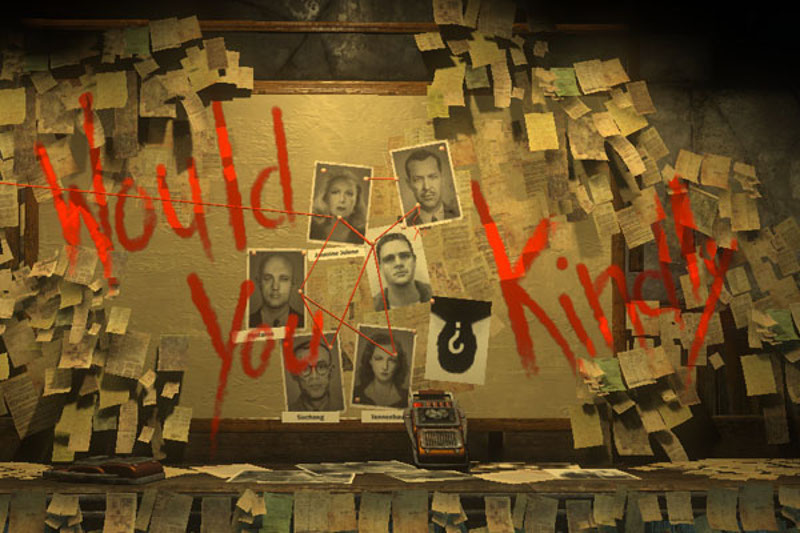 BIOSHOCK
BIOSHOCK
On the surface Bioshock is a clever if derivative first-person shooter set in an underwater city inspired by the novels and philosophy of the Atlas Shrugged author and right-wing objectivist, Ayn Rand. The setting works both as an exciting and horrific game world and as a mild satire on extreme libertarian values.
Bioshock’s real claim to being a piece of subversive art lies in a single phrase of dialogue which recurs throughout the game. "Atlas" speaks to you via a radio broadcast and helps to guide you through the strange and deadly city of Rapture. As he lays out his plan for you to escape the city, he gives you tasks to perform, always asking, “Would you kindly...?”
By the end of the game, the significance of that phrase becomes apparent, turning the narrative on its head within the game and perhaps giving you, as a player, pause to reflect on what it means to have free will in both the real and unreal worlds.
GALATEA
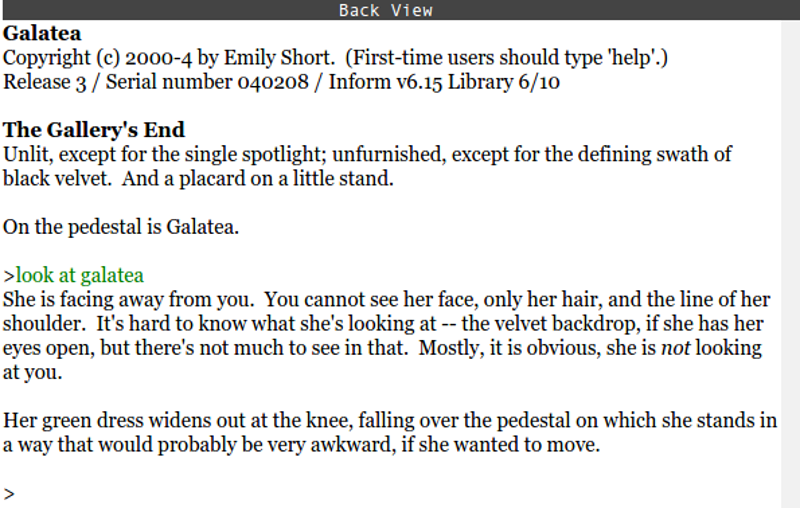 Galatea looks quite unlike other games in this selection in that it is entirely text-based. As a form of interactive fiction, Galatea has much in common with classic text adventures such as Colossal Cave or Hitchhikers Guide to the Galaxy. Where those games are about solving puzzles to progress a narrative, Galatea restricts itself to a single room and a single non-player character with whom you can interact.
Galatea looks quite unlike other games in this selection in that it is entirely text-based. As a form of interactive fiction, Galatea has much in common with classic text adventures such as Colossal Cave or Hitchhikers Guide to the Galaxy. Where those games are about solving puzzles to progress a narrative, Galatea restricts itself to a single room and a single non-player character with whom you can interact.
The eponymous Galatea is a talking statue on display in an art gallery and you are an art critic who has stumbled upon her. You can approach her, touch her and even talk to her by typing commands like ASK GALATEA ABOUT ART and usually receive an interesting answer. The result is a branching narrative that can be replayed multiple times, with each new interaction pushing you to a different outcome.
There is no plot as such. No mystery to solve. Just a fascinating character who may or may not be hiding some secrets. With hundreds of responses that can combine to form dozens of stories, it is a remarkable feat of both programming and writing. Galatea is nothing short of a new form of literature.
T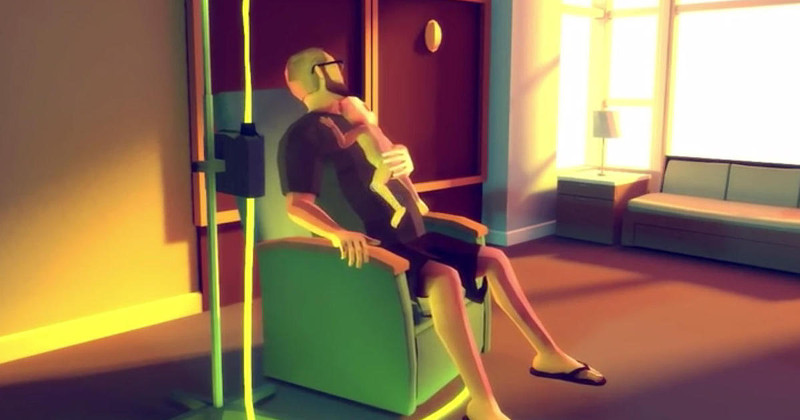 HAT DRAGON, CANCER
HAT DRAGON, CANCER
Husband and wife team Ryan and Amy Green began development of That Dragon, Cancer while caring for their son, Joel, who was being treated for an atypical teratoid rhabdoid tumour. Joel sadly passed away in 2014, at just five years old.
The game is a series of often surreal vignettes, showing snatches of the family’s life together. Some allow you to play with Joel as one of his parents. Others require you to navigate hospital corridors, nurse Joel through pain and illness and, eventually deal with the terrible loss at the centre of their lives. Some parts of the game play out as simple arcade games – for example, driving a cart around the hospital collecting medicine as a Mario Kart pastiche, or a platform game in which you are a knight fighting the titular Dragon.
There are moments of real tenderness and beauty as well as truly heartbreaking scenes where you are unable to comfort Joel as he undergoes agonising treatments. The gaming asides are cleverly constructed as essentially unwinnable, plucking you out of the fun and crashing you back down to earth. Some dragons cannot be beaten, no matter how brave the knight.
As a game, That Dragon, Cancer is flawed but as a piece of art, it stands as both a moving tribute to Joel as well as a stark and often devastating portrayal of grief and hope.
 BRAID
BRAID
Braid is a platform and puzzle game, similar in many respects to classics of the genre such as Super Mario Brothers or Jet Set Willy. We follow the main character, Tim, through several chapters in which he attempts to find a kidnapped princess and right some hinted-at wrong from his past. The game’s unique twist is the ability to manipulate time in various ways, even allowing the player to rewind time when the main character is killed. This time mechanic is a handy way to get out of trouble, but designer Jonathan Blow also uses it to construct intricate puzzles in which certain actions must be performed in reverse, or time altered in specific areas of the screen.
This element combined with the challenging puzzles and tricky platform-jumping challenges would be enough make Braid an interesting game. Blow’s real achievement, however, is how the game works as both a commentary on and subversion of gaming tropes and as an exploration of themes such as obsession and regret. The “Princess” could be the object of Tim’s obsessive stalking, or perhaps merely symbolic of a greater goal. There are many references to Robert Oppenheimer and cataclysmic explosions that have allowed some players to read the game as an allegory for the Manhattan Project.
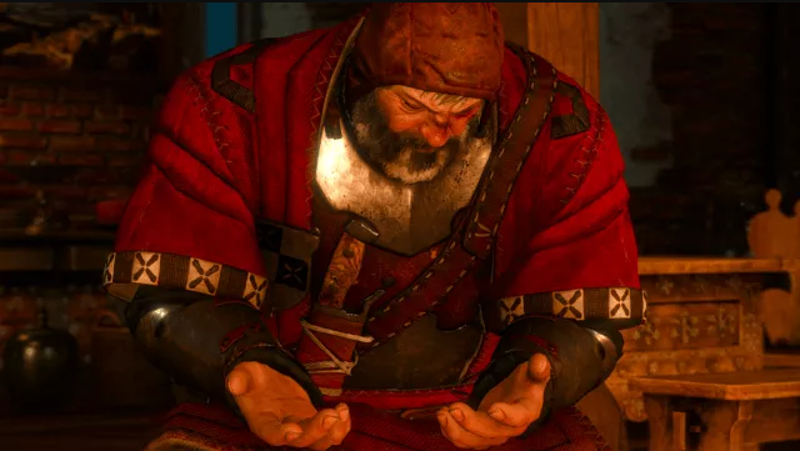 THE ELDER SCROLLS: SKYRIM/THE WITCHER III
THE ELDER SCROLLS: SKYRIM/THE WITCHER III
These two games are by no means the only examples that illustrate the way a game can create an entire living world to rival that of a novel. One could just as easily pick a recent Grand Theft Auto game or the sci-fi action game, Horizon Zero Dawn. All of these are the gaming equivalent of blockbuster movies – loud, brash and full of eye-popping action sequences and wish fulfillment.
What they also do is conjure an open world that the player is free to explore pretty much at will. You may or may not enjoy the "low art" of the actual gameplay on offer depending on how you feel about sword fighting, magic spells, car chases and robot dinosaurs but there is definitely a case to be made for the way these games create a sense of place.
The crafts of programming, animation, art direction and design combine to add layer upon layer of detail that flesh out the worlds your avatars fight their way through. By adding non-player characters, in-game media (such as the books of lore and poetry that litter the worlds of Skyrim and The Witcher or the spoof TV shows in Grand Theft Auto V) and making intelligent choices about architecture and environmental features, it is possible to create a world that feels real and sparks the possibility of new stories.
A great example is the "Bloody Baron" quest within the Witcher III. This is spins a dark tale of domestic violence and guilt that the player can affect in a number of ways but which is intrinsically part of the world in which it takes place.
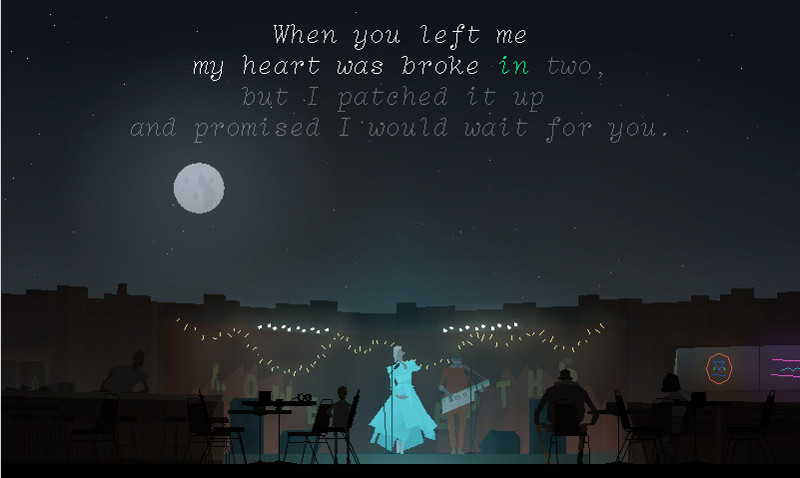 KENTUCKY ROUTE ZERO
KENTUCKY ROUTE ZERO
One of the more self-consciously arty games in this list, Kentucky Route Zero is a stylish and elliptical story about a delivery driver making one last run, that turns into a surreal and often unnerving adventure.
The plot is thin to the point of vanishing entirely in the middle few episodes but the characters and settings create something that is often quite beautiful. If you only play one game on this list, Knetucky Route Zero should be it.
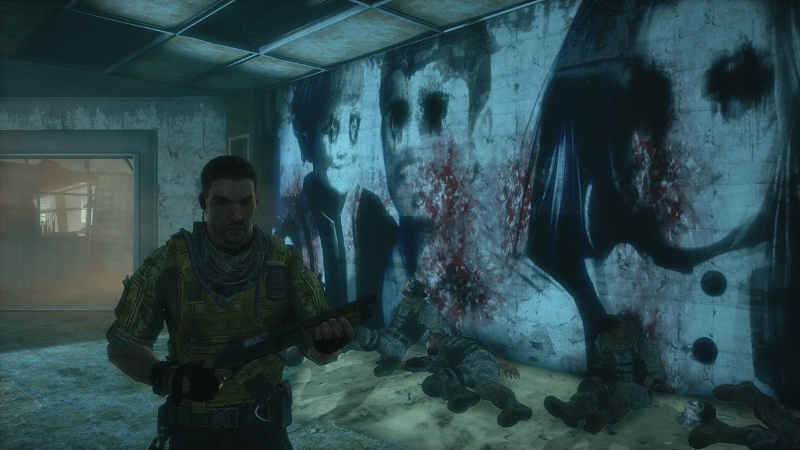 SPEC OPS: THE LINE
SPEC OPS: THE LINE
Based loosely on Conrad’s Heart of Darkness, Spec Ops: The Line looks and initially plays very much like a standard cover-based squad shooter. You are part of a special forces team, sent into a ruined Dubai to locate a US infantry battalion, feared lost during a relief mission. Things quickly go south and you find yourself pushed into a series of terrible moral choices.
The game expertly picks away at the heroic underpinning of the genre like a fingernail on a scab. It confronts the player with impossible situations and demands that they then confront their actions. By the end of the game your character has been pushed to the brink of sanity by both the horrors unfolding around him, and his part in creating them.
 FLOWER
FLOWER
Flower is a game of serene, almost Zen-like beauty. You "are" a flower petal, adrift on a breeze over a series of landscapes. You can control the gusts of air to soar and swoop around, discovering new parts of the world and causing other flowers to bloom. As you touch successive flowers, you gain more petals until you are swooping around in a cloud of beautiful colours.
Flower is an adventure game in abstract terms. You explore the world, but there isn't really a plot to uncover beyond the journey itself, which gradually draws you closer to a city full of menacing architecture. The game plays with ideas of nature versus progress and the modern world but never forces them down your throat. You may make what you like from Flower, just like a good walk in the countryside.
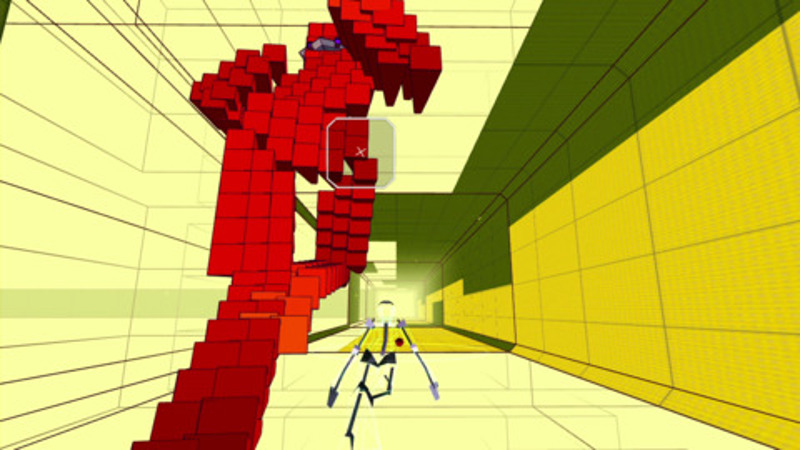 REZ
REZ
Like many of the games in this selection, Rez works perfectly well as "just a game" – in this case, an on-the-rails shoot 'em up. What distinguishes it from similar games such as Space Harrier or After Burner is how it integrates music into its gameplay.
In Rez, as in many games, the action is accompanied by a pulsating techno soundtrack. Unlike most games, every shot you fire against your enemies adds more tones and pulses to the music, seamlessly integrating what you are doing on screen into an evolving composition. The resulting combination of music and visuals has been compared to an artificially-induced synaesthesia. Most games offer you music. In Rez, you ARE music.
The future of Arts Journalism
You can stop theartsdesk.com closing!
We urgently need financing to survive. Our fundraising drive has thus far raised £49,000 but we need to reach £100,000 or we will be forced to close. Please contribute here: https://gofund.me/c3f6033d
And if you can forward this information to anyone who might assist, we’d be grateful.

Subscribe to theartsdesk.com
Thank you for continuing to read our work on theartsdesk.com. For unlimited access to every article in its entirety, including our archive of more than 15,000 pieces, we're asking for £5 per month or £40 per year. We feel it's a very good deal, and hope you do too.
To take a subscription now simply click here.
And if you're looking for that extra gift for a friend or family member, why not treat them to a theartsdesk.com gift subscription?
more Gaming
 'We are bowled over!' Thank you for your messages of love and support
Much-appreciated words of commendation from readers and the cultural community
'We are bowled over!' Thank you for your messages of love and support
Much-appreciated words of commendation from readers and the cultural community
 Kelly Clancy: Playing with Reality - How Games Shape Our World review - how far games go back
The acclaimed neuroscientist on the world and history of games, in all their variety
Kelly Clancy: Playing with Reality - How Games Shape Our World review - how far games go back
The acclaimed neuroscientist on the world and history of games, in all their variety
 Rage 2 review – garish but great post-apocalyptic shooter
Challenge The Authority in this 'Mad Max on mushrooms' renegade romp
Rage 2 review – garish but great post-apocalyptic shooter
Challenge The Authority in this 'Mad Max on mushrooms' renegade romp
 World War Z review - bloodthirsty fun with the zombie apocalypse
Chainsawing the brain-eaters as you battle against the tide of the undead
World War Z review - bloodthirsty fun with the zombie apocalypse
Chainsawing the brain-eaters as you battle against the tide of the undead
 The Lego Movie 2 Videogame review - everything is not awesome
Few fresh ideas means this movie adaptation treads the same old ground
The Lego Movie 2 Videogame review - everything is not awesome
Few fresh ideas means this movie adaptation treads the same old ground
 Anthem review - singing praises? More like a cautious nod
A rocky start for a new franchise that offers potential and problems in equal measure
Anthem review - singing praises? More like a cautious nod
A rocky start for a new franchise that offers potential and problems in equal measure
 Crackdown 3 review - spectacular super-powered action that was great fun many years ago
Nearly a decade has passed since the last incarnation but little has changed in this stagnant shooter
Crackdown 3 review - spectacular super-powered action that was great fun many years ago
Nearly a decade has passed since the last incarnation but little has changed in this stagnant shooter
 Battlefield V review - WWII on an epic scale
The veteran series returns for another ambitious tour of duty
Battlefield V review - WWII on an epic scale
The veteran series returns for another ambitious tour of duty
 Fallout 76 review - how to wreck a perfectly good legacy with one messy game
When home runs go horribly wrong
Fallout 76 review - how to wreck a perfectly good legacy with one messy game
When home runs go horribly wrong
 Red Dead Redemption 2 review - the cowboy drama makes a triumphant return
An ambitious Wild West odyssey that matches epic scale with benchmark skill
Red Dead Redemption 2 review - the cowboy drama makes a triumphant return
An ambitious Wild West odyssey that matches epic scale with benchmark skill
 Call of Duty: Black Ops 4 review – less is more
Solo rations have been relegated from this benchmark war series
Call of Duty: Black Ops 4 review – less is more
Solo rations have been relegated from this benchmark war series
 FIFA 19 review - the best just got a bit better
It looks and plays great, but what’s new?
FIFA 19 review - the best just got a bit better
It looks and plays great, but what’s new?

Add comment